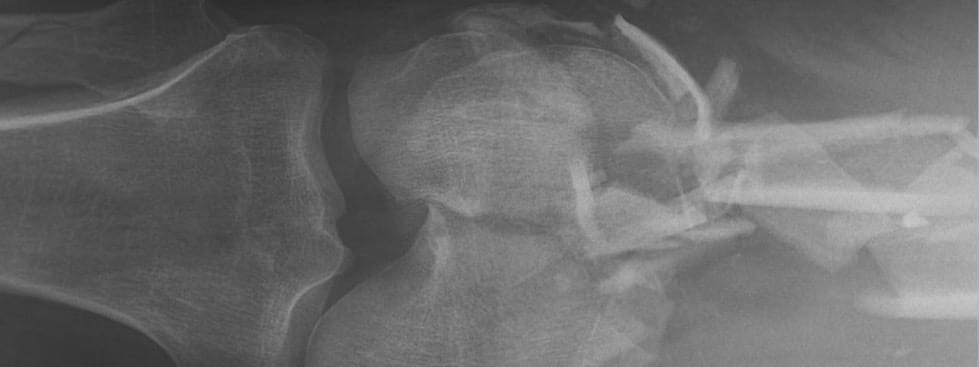Trauma! Assessing the Abdomen
aka Trauma Tribulation 019
There has been a nasty accident at the circus that’s currently in town. Apparently the rotund chap who tenses his abdominal muscles to withstand the impact of a cannonball and the other rotund chap who fires the cannon had a misunderstanding…
There could potentially be some tricky abdominal injuries coming your way!
Questions
Q1. When should abdominal and pelvic injuries be considered in the primary survey of a major trauma patient?
Answer and interpretation
Abdominal and pelvic injuries may cause life-threatening hemorrhage
Initial examination is best performed in the ‘C’ phase of the primary survey, with the mindset of ‘Find the bleeding, stop the bleeding’
While the patient is being assessed in the trauma bay, a nurse asks you if the patient needs to go to theatre for an emergency operation.
Q2. What are the common indications for an emergency laparotomy in abdominal trauma?
Answer and interpretation
Common indications for emergency laparotomy are:
- Peritonism
- Free air
- Evisceration
- Penetrating abdominal trauma + hypotension
- Gunshot wound traversing peritoneum or retroperitoneum
- GI bleeding following penetrating trauma
- Blunt abdominal trauma + hypotension with positive FAST scan, positive diagnostic peritoneal lavage (DPL) or peritonism
None of these indications are present… yet. However, no imaging has been performed at this stage.
Q3. What investigations may be useful in deciding if an unstable trauma patient should go to the OT for a laparotomy?
Answer and interpretation
Key investigations to consider are:
- FAST scan
- DPL
- CT abdomen
You decide to perform a FAST scan.
Q4. Discuss the role of the FAST scan in the unstable major trauma patient?
Answer and interpretation
Pros
- Quick to perform with immediate results
- Repeatable
- Patient doesn’t have to leave Emergency department
- Sensitivity approaching 96% in detecting >800mls blood
Cons
- Requires >250 mL free fluid to collect in Morison’s pouch for a positive result
- Operator dependent
- Doesn’t specify anatomical structures injured
- Does not distinguish other causes of intraperitioneal fluid (e.g. ascites, residual fluid after DPL)
- Doesn’t look at solid organs, hollow visci or retroperitoneal structures.
- Can be technically difficult in obese patients or with lots of bowel gas.
The FAST scan is negative. You wonder if a diagnostic peritoneal lavage (DPL) should be performed.
Q5. Discuss the role of the DPL in the unstable major trauma patient?
Answer and interpretation
DPL is rarely performed due to the advent of the FAST scan. It’s main role is when FAST and CT are unavailable or in mass casualty situations.
The modified procedure of diagnostic peritoneal aspirate (DPA) is useful in the hemodynamically unstable abdominal trauma with a negative FAST scan — a positive DPA indicates a false negative FAST scan and such patients require emergency laparotomy.
Pros
- Highly sensitive for intraperitoneal hemorrhage (>97%)
- Rapid
- Performed at the bedside
Cons
- Invasive
- Doesn’t specify anatomical structures injured
- False positives may result from trauma during the procedure
- Rarely performed, practitioner’s have become deskilled
- Residual fluid following DPL makes subsequent FAST scans unreliable
- Modified technique required if pregnant, pelvic fracture or midline scarring
You decide that neither a DPL nor DPA is indicated, as the FAST scan is negative and the patient is hemodynamically stable. However his abdominal pain and tenderness is ongoing.
Q6. Which abdominal trauma patients require definitive imaging?
Answer and interpretation
Consider definitive imaging when an emergency laparotomy is not indicated and:
- Trauma patients with abdominal tenderness
- Trauma patients with altered sensorium
- Distracting injuries or injuries to adjacent structures
You now decide to order a CT abdomen.
Q7. Discuss the role of the CT abdomen in the stable major trauma patient?
Answer and interpretation
Multidetector CT is the test of choice in the haemodynamically stable patient with abdominal trauma.
Pros
- Identifies specific anatomical structures injured, allows grading of severity and helps guide management
- Concurrent imaging of other body compartments is frequently indicated
- Images retroperitoneal structures
- Provides imaging of the thoracolumbar vertebrae
Cons
- Patient leaves emergency department
- Patient transfers time consuming
- Requires IV contrast and risk adverse reactions
- Radiation exposure
- Less sensitive with pancreatic, diaphragmatic and hollow viscus injuries
- Poor access to patient during the scan should he or she deteriorate
- Requires additional skilled staff (CT radiographers and radiologists)

CLINICAL CASES
Trauma Tribulation
Chris is an Intensivist and ECMO specialist at The Alfred ICU, where he is Deputy Director (Education). He is a Clinical Adjunct Associate Professor at Monash University, the Lead for the Clinician Educator Incubator programme, and a CICM First Part Examiner.
He is an internationally recognised Clinician Educator with a passion for helping clinicians learn and for improving the clinical performance of individuals and collectives. He was one of the founders of the FOAM movement (Free Open-Access Medical education) has been recognised for his contributions to education with awards from ANZICS, ANZAHPE, and ACEM.
His one great achievement is being the father of three amazing children.
On Bluesky, he is @precordialthump.bsky.social and on the site that Elon has screwed up, he is @precordialthump.
| INTENSIVE | RAGE | Resuscitology | SMACC
